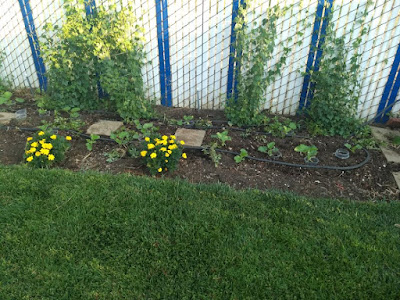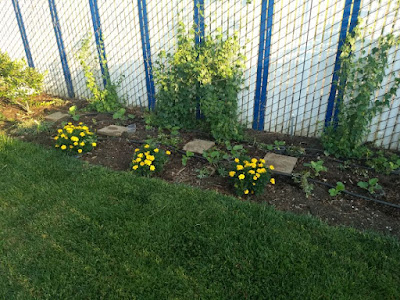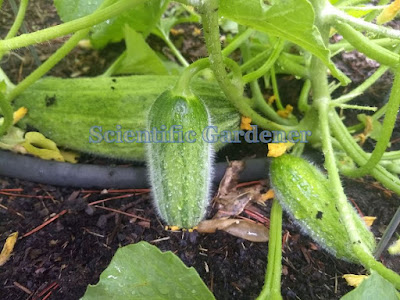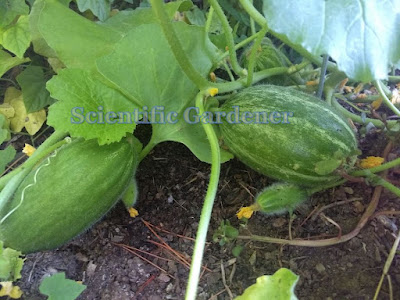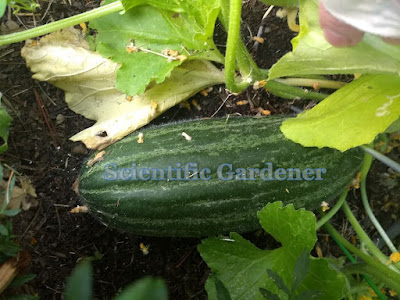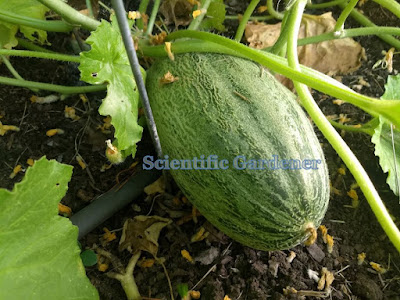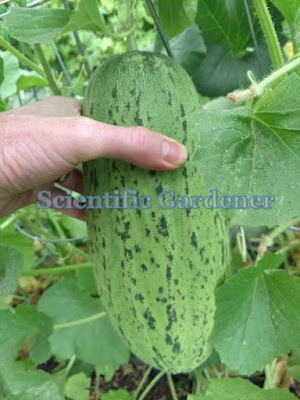Occasionally when we finally receive something that we have hoped for, the situation turns out just the way we had hoped for, but it seems that more often - the things that we have really want don’t turn out the way we anticipated. The latter circumstance is what I experienced in growing out a southern Italian carosello-type cucumber by the name of the Cucummaru di San Donato.
The Cucummaru di San Donato < https://biodiversitapuglia.it/mario-paglialonga-custode-del-cummarazzo-san-donato/> was supposed to be really something special from the town of San Donato. Besides having a very long rich history, this cucumber variety looks really cool. While this carosello cucumber variety has been viewed as very special to some growers, I began to have concerns with the San Donato Cucummaru beginning early in the season.
It all began with the shape of the fruit. While the San Donato is generally supposed to be a medium-sized cylindrical fruit, the fruit turned out to be very variable in shape. I had some fruit that grew longer, some shorter and had some fruit that were almost round. The variability of the developing fruit made it difficult for me to determine exactly what I was dealing with.
As the fruit continued to grow, the next thing that became apparent was the color. When I say color, I mean that there were differences in color pattern as well as the shade of color as well as how diffused the color was over the skin of the fruit. There were also differences in the foreground and background color of the fruit. This second concern made me to begin to wonder if I was dealing with a variety with a population that had not been properly maintained.
In order for a specific vegetable variety to maintain its integrity, the variety must express traits that are specific to just that given vegetable variety. Each time a gardener or farmer saves seed, she is selecting for something. If no specific traits are selected for, the vegetable variety can become what is often referred to as “polymorphic”. The root “poly” means multiple while “morph” refers to a physical change. While polymorphic can specifically refer to a variety’s shape, it often refers to multiple aspects of the fruit’s expression including shape, size, color, taste, texture, etc. Polymorphism occurs when there is such a large span of genetic variation in the germoplasm that the physical expression in multiple fruits from the same seed can look like the grower is dealing with completely different varieties of the same vegetable. While diversity is a valuable thing in developing a new variety, it is often considered a very negative trait for fruit marketability.
I can deal with growing a cucumber variety that has some variation, but there is one trait that I do not tolerate. That of bad taste. Unfortunately, upon tasting the fruit of the San Donato, I found that poor taste was yet another “polymorphic” trait which had crept into the population, which meant that I had to taste fruit from each plant to determine which plants to cull (remove from the population) in order to save the remainder of the fruit. By the time the issue with taste had become apparent, it was too late to start a second crop. All plants that produced poor-tasting fruit were removed, but the rest needed to be left in place to ensure that enough good seed could be gathered from the remaining fruit.
As the summer drew to an end and powdery mildew began to spread over the plants, I felt done with trying to grow out the San Donato di Cucummaru. Given how rare this variety is, I will refrain from judging whether I was given genetically poor seed or not. Having started this variety near the end of the summer, the shape, color and taste of the fruit was so variable that I only had time to focus on improving the taste.
Sometimes what we want is given to us just the way we had imagined but at other times, the thing we want is given to us in a way that it requires work and time to mold it into what it ought to be. This is often the way with gardening. I can visit my garden again and again, thinking that I will teach it how to behave and grow what I want it to. But my garden already possesses most of what it needs to be successful. When I am willing to change my gardening practices to align with the needs of my garden, I notice the health of my plants improve - not because I exerted my will to tame the “wild” aspects of my soil, but because I opened myself up to learning truths that the garden already knows.





